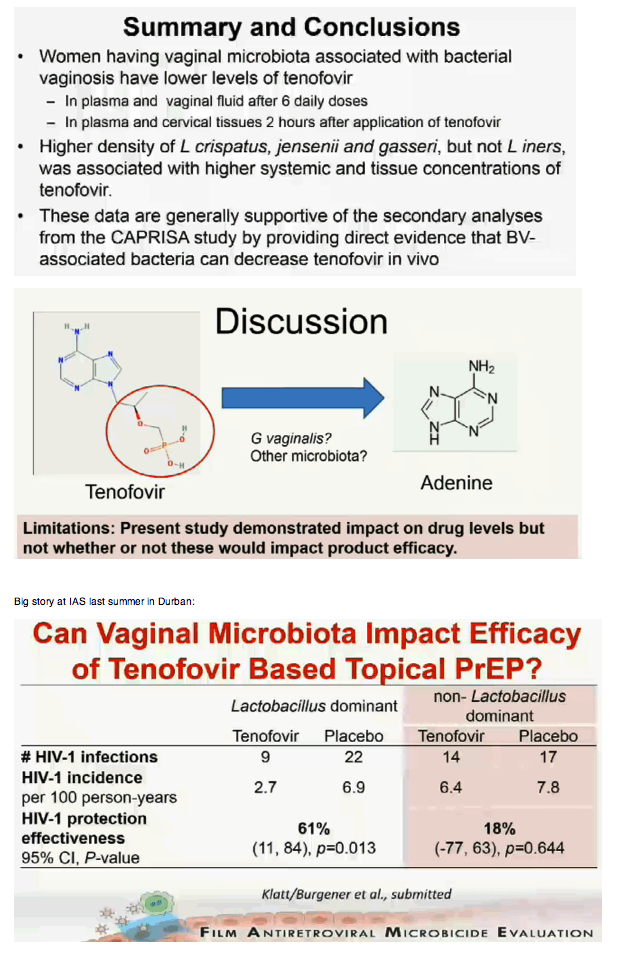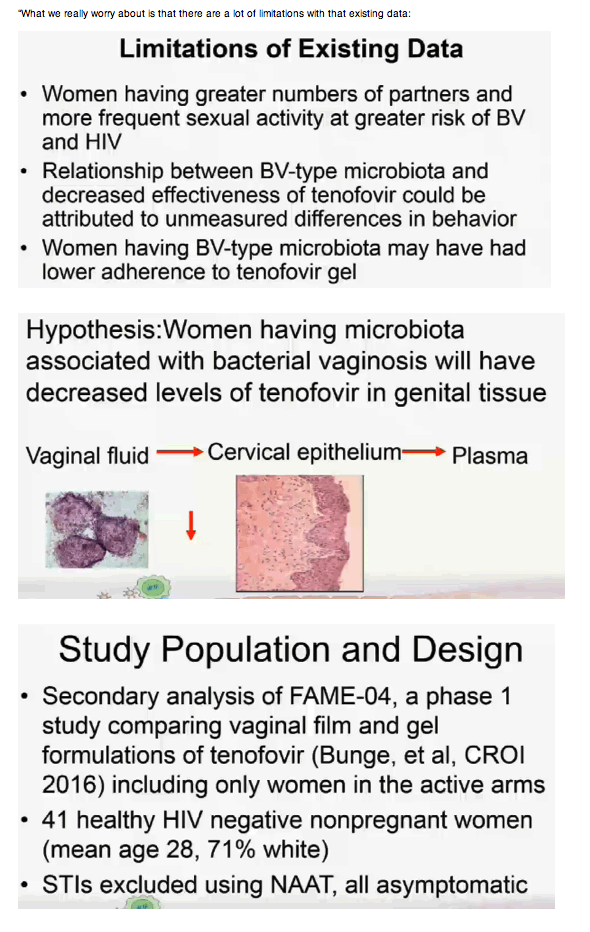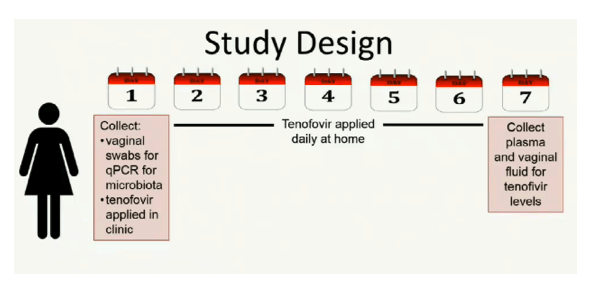 |
 |
 |
| |
IMPACT OF VAGINAL MICROBIOTA ON GENITAL TISSUE
AND PLASMA CONCENTRATIONS OF TENOFOVIR
|
| |
| |
Sharon L Hillier
University of Pittsburgh, Pittsburgh, PA, USA
webcast: http://www.croiwebcasts.org/console/player/33459?mediaType=slideVideo&
Abstract Body:
Secondary analyses of CAPRISA 004 showed that women with a Lactobacillus dominant vaginal microbiota had higher detection of tenofovir (TFV) in cervicovaginal lavage (CVL) fluid than women with non-Lactobacillus dominant microbiota. The objective of this secondary analysis was to evaluate the impact of vaginal microbiota on TFV concentrations in the genital tract and plasma, and tenofovir diphosphate (TFV-dp) in genital tissues following timed vaginal application.
41 healthy HIV negative women (mean age 28, 71% white) used either TFV 1% gel (40 mg) or films (40 and 10 mg) for 6 days. After 6 self-administered doses, cervicovaginal fluid (CVF) was collected on the 7th day prior to the final dose. Women inserted the final dose in the clinic with confirmation of correct product placement. Two hours later, cervical biopsies were obtained for tissue TFV-dp. Plasma and CVL were collected for TFV quantification. Vaginal swabs for diagnosis of bacterial vaginosis (Nugent score) and quantitative PCR detection of G vaginalis (GVAG) and Atopobium vaginae (AVAG) were collected prior to product use. The relationship between vaginal microbiota and TFV concentrations was assessed using linear and quadratic regression models.
After 6 days of vaginal TFV use, trough TFV concentrations were lower in the CVF (P=0.032) and plasma (P=0.05) among women having higher levels of GVAG. Two hours after the final directly observed TFV product application, higher GVAG concentrations were significantly associated with decreased TFV-dp in cervical tissues (P=0.019) and lower TFV concentrations in plasma (P=.001, Figure 1A,B). There was also a linear association between increasing concentrations of AVAG and decreased TFV-dp in cervical tissue (P=0.006) and plasma concentrations of TFV (P=0.03). Women having Lactobacillus dominant microbiota (Nugent score 0-3) had significantly higher levels of TFV in the plasma (P=0.001) and TFV-dp in cervical tissues (P=0.045). CVL concentrations of TFV two hours after product application were not associated with vaginal microbiota (P>0.08).
This study supports the CAPRISA findings and show that levels of TFV-dp in genital tissues and TFV in the plasma are correlated to markers of bacterial vaginosis (Nugent score, increased GVAG and AVAG). These data suggest that vaginal microbiota may impact the uptake of tenofovir when applied intravaginally. The mechanisms associated with reduced tenofovir uptake and its clinical implications require further study.



|
| |
|
 |
 |
|
|